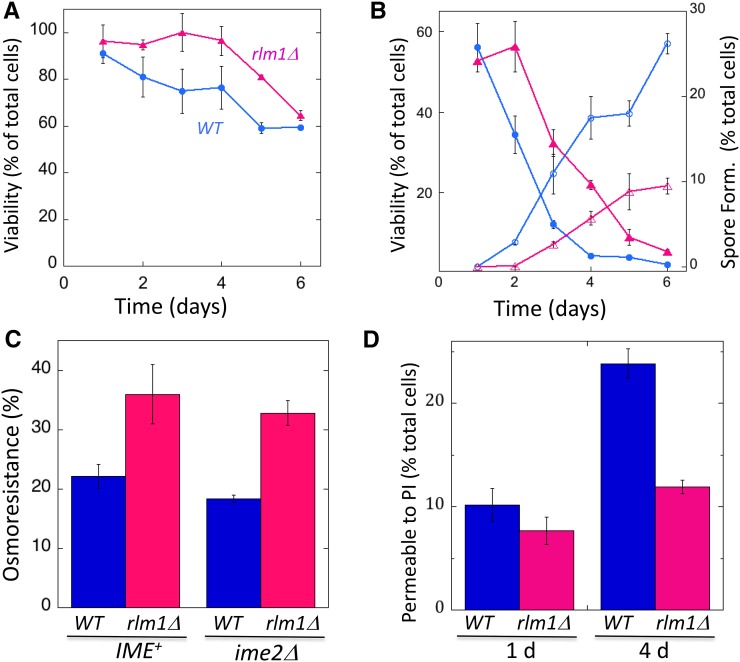Figure 6.
RLM1 increases the permeability of nonsporulated cells in colonies. (A) Viability of nonsporulated (diploid) cells under osmotically stabilized conditions. Wild-type colonies, blue circles (SH3881); rlm1Δ colonies, magenta triangles (SH4708) (n =3). (B) Viability of nonsporulated cells from same colonies as in A after resuspension in water and plating on standard osmolarity medium. Symbols are the same as in A, and fractions of cells from colonies that have formed spores are shown by corresponding open symbols (n =3). (C) Effect of rlm1Δ on osmoresistance. Four-day RLM1+ colonies (blue bars) compared to rlm1Δ colonies (magenta bars) in both IME2+ (left side, SH3881 and SH4767, respectively) and ime2Δ (right side, SH3883 and SH5072) backgrounds. All colonies were resuspended in sorbitol, and the suspension was split and then diluted and plated either in the presence or absence of sorbitol (n = 3). Osmoresistance = 100% × cfu (absence of sorbitol) per cfu (presence of sorbitol). (D) Permeability to PI. Fraction of cells from colonies at the indicated times that are permeable to PI after resuspension in 2 M sorbitol. (C and D) RLM1+ (wild type, blue bars, SH3830) and rlm1Δ (magenta bars, SH4800) colonies were assayed (n = 3).

